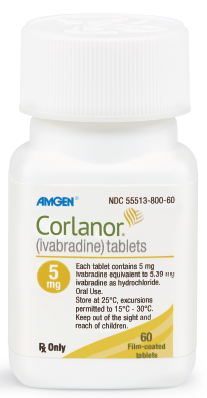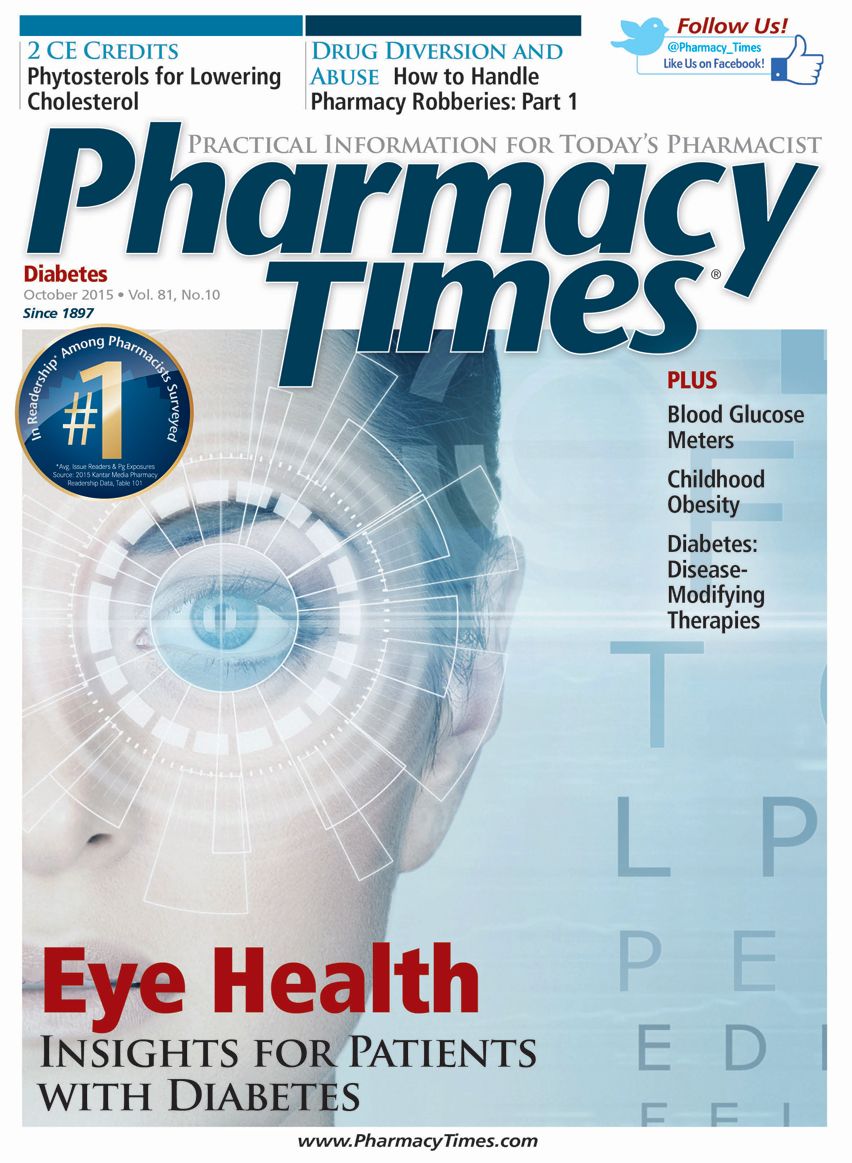Corlanor
The FDA has approved Amgen's Corlanor to reduce the risk of hospitalization for worsening heart failure in patients with stable, symptomatic chronic HF with left ventricular ejection fraction.

The FDA has approved Amgen’s Corlanor (ivabradine) to reduce the risk of hospitalization for worsening heart failure (HF) in patients with stable, symptomatic chronic HF with left ventricular ejection fraction (LVEF) ≤35% who are in sinus rhythm with a resting heart rate (HR) ≥70 beats per minute (bpm) and either are on maximally tolerated doses of betablockers or have a contraindication to beta-blocker use.1 An estimated 5.7 million Americans are affected by HF, half of whom have reduced LVEF, which costs the United States approximately $31 billion each year, with a large portion of the cost being attributed to hospitalizations.2
Pharmacology and Pharmacokinetics
Corlanor is a hyperpolarization-activated cyclic nucleotide-gated channel blocker. This affects the cardiac pacemaker current, which regulates HR. In clinical electrophysiology studies, Corlanor had no effect on ventricular repolarization or myocardial contractility.
Under fasting conditions, Corlanor reaches its peak plasma concentration in approximately 1 hour; however, administration with food is recommend because it delays absorption by about 1 hour and increases plasma exposure by 20% to 40%. Corlanor is extensively metabolized by CYP3A4-mediated oxidation.1
Dosage and Administration
Treatment with Corlanor should begin at 5 mg twice daily with meals. After 2 weeks of treatment, the dose may be adjusted based on HR, with a maximum dose of 7.5 mg twice daily. In patients with conduction defects or in whom bradycardia could lead to hemodynamic compromise, the dose should begin at 2.5 mg daily before being increased based on HR.1
Clinical Trials
Corlanor was evaluated in the SHIFT trial (Systolic Heart failure treatment with the If inhibitor ivabradine Trial), a randomized, double-blind study of 6558 adults with stable New York Heart Association Class II to IV HF, LVEF ≤35%, and a resting HR ≥70 bpm. Patients were randomized to receive either placebo or Corlanor in addition to their current medications, such as beta-blockers (89%), angiotensin-converting enzyme inhibitors and/or angiotensin II receptor blockers (91%), diuretics (83%), and antialdosterone agents (60%). The trial showed that treatment with Corlanor significantly reduced the time to first occurrence of hospitalization for worsening HF.1-3
Contraindications, Warnings, and Precautions
Corlanor is contraindicated in patients with acute decompensated HF, blood pressure less than 90/50 mm Hg, sick sinus syndrome, sinoatrial block or third-degree atrioventricular block (AVB) (unless a functioning demand pacemaker is present), resting HR less than 60 bpm prior to initiation of treatment, severe hepatic impairment, and pacemaker dependence, or in combination with strong CYP3A4 inhibitors.1
Women should use contraception during treatment with Corlanor, as it may cause fetal toxicity when given during pregnancy; Corlanor also should not be used during breast-feeding. Because Corlanor increases the risk for atrial fibrillation (AF), patients using the drug should have their cardiac rhythm monitored regularly and discontinue use if AF develops. Bradycardia, sinus arrest, and heart block have occurred during treatment with Corlanor. Risk factors for bradycardia include sinus node dysfunction, conduction defects, ventricular dyssynchrony, and use of other negative chronotropes. Concurrent use of verapamil or diltiazem will increase Corlanor exposure and should be avoided. Corlanor also should not be used in patients with second-degree AVB unless a functioning demand pacemaker is present. Corlanor has not been studied in pediatric patients.1,2
Corlanor plasma concentrations will be increased by CYP3A4 inhibitors and decreased by CYP3A4 inducers. Concomitant administration with negative chronotropes will increase the risk of bradycardia. Corlanor is not recommended for use with demand pacemakers set to rates ≥60 bpm. The most common adverse reactions (≥1%) are bradycardia, hypertension, AF, and luminous phenomena.1
Dr. Holmberg earned her PharmD from the University of Connecticut and completed an ambulatory care residency at the Phoenix VA Healthcare System. Her practice has also included pediatrics and inpatient mental health. She resides in Phoenix, Arizona.
References
- Corlanor [prescribing information]. Thousand Oaks, CA: Amgen Inc; 2015. http://pi.amgen.com/united_states/corlanor/corlanor_pi.pdf. Accessed June 2015.
- FDA approves Corlanor (ivabradine) to reduce the risk of hospitalization for worsening heart failure in patients with chronic heart failure. Available at http://wwwext.amgen.com/media/media_pr_detail.jsp?releaseID=2035505. Accessed June 2015.
- FDA approves Corlanor to treat heart failure [press release]. Silver Spring, MD: US Food and Drug Administration; April 15, 2015. www.fda.gov/NewsEvents/Newsroom/PressAnnouncements/ucm442978.htm. Accessed June 2015.

